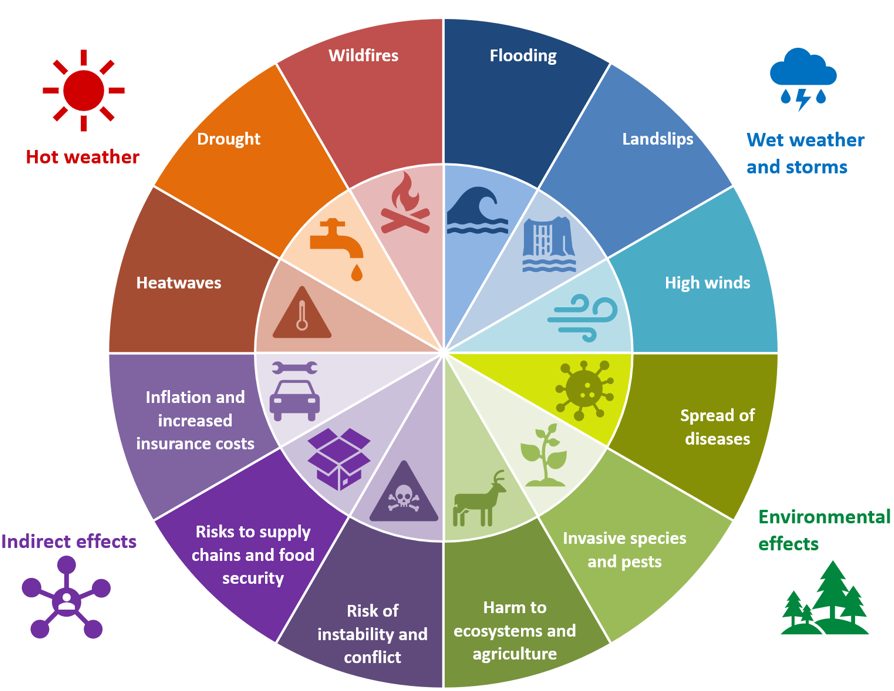Climate change will threaten Bracknell Forest’s ecosystems, economy and the health and lives of residents. This means that local and global action to reduce emissions and minimise the impact of climate change will be vital.
However, regardless of this Bracknell Forest will experience some warming and there is a risk of significant warming if emissions are not limited at the global scale. The table below shows what the impact could be on the local climate at different levels of global heating. It is based on data from what will climate change look like near me (BBC, 2022).
| Local impacts | Now | At 2oC | At 4oC |
|---|---|---|---|
| Maximum temperatures | 35.8oC | 37.7oC | 43oC |
| Average rainfall (days per month in summer) | 8 | 7 | 5 |
| Maximum rainfall (rainiest summer day) | 44mm | 54mm | 50mm |
The climate hazard wheel below shows what impacts this could have for the borough. This is based on applying national research to the local area, particularly the UK Climate Change Risk Assessment 2022.

Risks this will create to the council and the borough include:
| Risks to the borough | Risks to the council |
|---|---|
| Increase in injuries and deaths | Reputational risks |
| Poor physical and mental health | Staff health impacts |
| Disruption of services and transport | Staff transport disruption |
| Food shortages | Service delivery disruption |
| Economic damage and job losses | Increased costs and supply shortages |
| Damage to buildings and infrastructure | Damage to buildings and assets |
| Harm to local ecosystem | Pressure on relevant council teams |